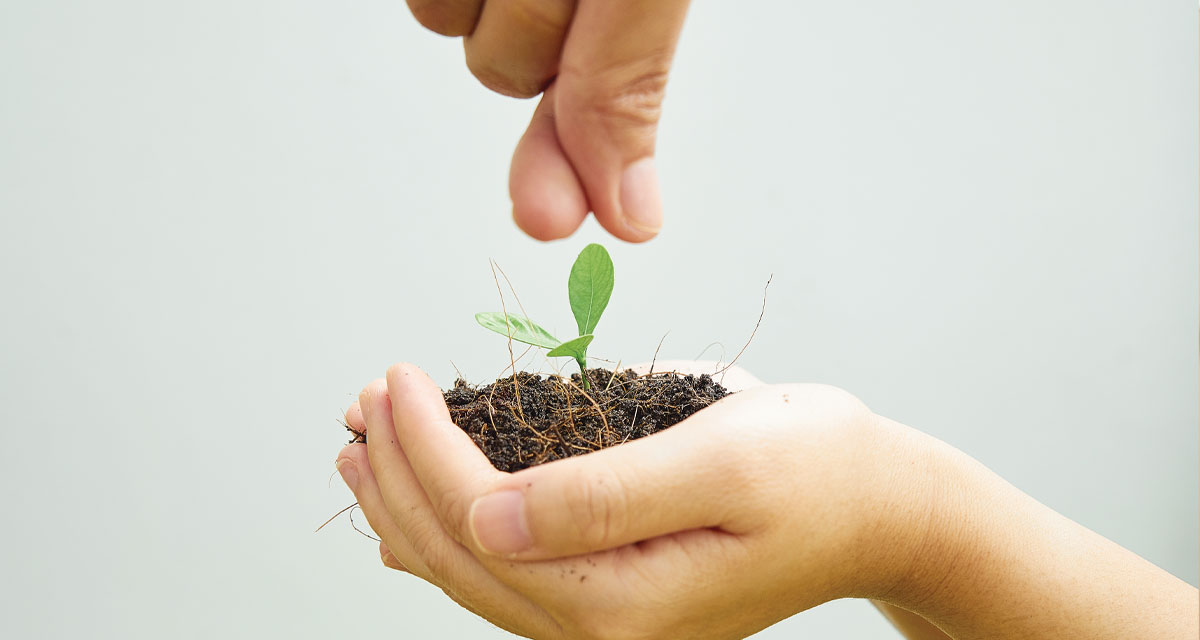When the signs of Spring are evident, a child will wonder out loud, “Why are there so many flowers in the trees?” “What are those purple flowers called?” and, “Why are there so many colors in the spring?” Even if parents do not know all the answers to the mysteries of life, the child’s interest is a chance to dig into the fascinating and diverse themes of botany.
Lesson: Examining a Plant
Taking walks in nature, even if it involves a stroll around the neighborhood, provides opportunities to collect plant samples. Use the term “botanist,” which describes a specialized scientist who studies how and where plants grow, and their significance in nature.
Once the specimens arrive home, he or she can conduct the following experiments:
- With the aid of a magnifying glass, assess the veins, the changes in color, the spots and the health of the leaf. Allow questions of wonder!
- Use drawings to help recognize the type of plant, and label the location of the seeds, petals, stem, leaves, and roots. Not all plants grow the same; therefore, learning about a variety aids in understanding. Use advanced terms such as sepal, pollination, photosynthesis, and the scientific and common names of plants. With repetition, your child will integrate the terms into his or her vocabulary!
- In using paper and crayons, encourage the child to make rubbings of various types of plants and leaves. Introduce herbaceous and woody plants, softwoods, and hardwoods.
- Start a botany journal of pictures, names, and observations. Test your child’s knowledge on walks by asking about the names of trees or flowers.
Lesson: Biology of a Plant
Examining a plant leads to further questions of curiosity, such as “How do plants grow?” While there are numerous educational experiments, try the following:
- As living things, leaves breathe and receive nutrients to grow. To prove this idea, add two drops of food coloring to a juice glass and watch the changes in a celery stalk or white flower.
- Defining the term photosynthesis requires an activity. Remove a plant to a dark room while continuing to water. What happens to the plant?
Lesson: The Life Cycle of Plants
Gardening requires many ideal situations, such as quality of soil, six-plus hours of sunlight, oxygen, and watering. Children will learn just by participating; therefore, plant a garden that includes a variety of tubers, vines, stems, and stalks.
- Most children can participate in growing a plant in a small paper cup. Expand the experience by growing sunflower seeds in a five-gallon bucket for harvesting.
- Place a few seeds in an unsealed sandwich bag with a few drops of water; then, tape it to a window with a great deal of light.
Gloves, Trowel, Soil, and Containers
Caring for plants often requires the use of tools. In a variety of activities, children also can learn to feel comfortable using hand trowels, secateurs for pruning and clipping, a hoe, shovel, and fork, to name a few. To incorporate useful skills alongside the practice of using tools, try a few of the following activities.
- Cuttings and Water: Most houseplants only need a four to six-inch stem to thrive and grow in water. Many vegetables regrow with the aid of water. Encourage your child to submerge the top of the carrot plant, the roots of a green onion, or a celery stalk.
- Propagation: Rather than cutting flowers to use for an arrangement, another lesson is to form a new plant. Woody plants such as forsythia, hydrangea, lilac, rose, and many others require a cut below the sixth shoot or leaf and extending roughly six inches. After removing the lower leaves, allow the cuttings to soak in water. After a few hours, transfer the “sip” to a rooting hormone and plant in a seedling soil mix. With daily spritzing the first four days and watering daily, new shoots will appear in two to four weeks.
Every season of the year offers children an opportunity to learn about plants and their start from seeds. It begins with questions and the wide-eyed curiosity of witnessing nature. Encourage conversation. The topic of botany can only grow into a life skill with guidance; therefore, take walks and exchange ideas about plants, whether for food or beautification purposes. In time, your child will want to take an active approach in environmental stewardship, nutrition and health, science education, practical living, and enjoyment of the outdoors.



















